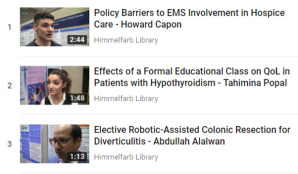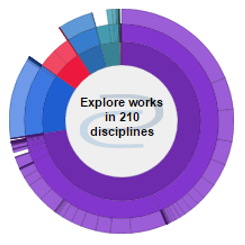 Recently, the NIH took steps to help protect the credibility of published research findings from NIH-funded research. In a recent blog post, the National Library of Medicine called on librarians to help in this effort. In NIH Guide Notice OD-18-011, released on November 3, 2017, the NIH requested support for authors by asking grantees, contractors, researchers, and librarians to:
Recently, the NIH took steps to help protect the credibility of published research findings from NIH-funded research. In a recent blog post, the National Library of Medicine called on librarians to help in this effort. In NIH Guide Notice OD-18-011, released on November 3, 2017, the NIH requested support for authors by asking grantees, contractors, researchers, and librarians to:
- Adhere to the principles of research integrity and publication ethics
- Identify journals that follow best practices promoted by professional scholarly publishing organizations
- Avoid publishing in journals lacking clearly stated and rigorous peer-review processes.
What should you do when deciding where to publish your research?
- Evaluate the options using guided by one of these resources:
- Access Himmelfarb’s Scholarly Publishing Research Guide for resources to help you decide where to publish:
- Consult your librarian. Librarians have experience in developing rigorous collection criteria when considering journals to include in library collections. Thanks to this expertise, librarians are extremely familiar with journal publishers as well as with the journals that are being used by researchers and for publication.
- Request a consultation
- Search Himmelfarb’s Health Sciences Research Commons or PubMed to find articles related to your topic and identify potential journals that might be a good fit for your article.
Researcher-authors can often find it difficult to evaluate a journal's quality, editorial practices, peer-review practices, and scientific merit. Librarians can be a great help to authors in selecting publishing venues. If you are getting ready to publish and need assistance in selecting the best journal for your article or research, Himmelfarb has resources that can help!
Sources:
Marill, J., Funk, K., Sheehan, J. (2017, November 7). Calling on librarians to help ensure the credibility of published research results [web log post]. Retrieved from https://nlmdirector.nlm.nih.gov/2017/11/07/calling-on-librarians-to-help-ensure-the-credibility-of-published-research-results/
Mediterranean Center of Medical Sciences (2015). Research [online image]. Retrieved from https://www.flickr.com/photos/mcmscience/17664002728
 A new Doctor of Nursing Practice (DNP) Project Repository recently was developed by the School of Nursing in collaboration with Himmelfarb Library's Research Commons.
A new Doctor of Nursing Practice (DNP) Project Repository recently was developed by the School of Nursing in collaboration with Himmelfarb Library's Research Commons.

 Want to learn about projects from GW's Research Days 2018? Watch the videos!
Want to learn about projects from GW's Research Days 2018? Watch the videos! Recently, the NIH took steps to help protect the credibility of published research findings from NIH-funded research. In a recent
Recently, the NIH took steps to help protect the credibility of published research findings from NIH-funded research. In a recent  How will proposed changes to health care law affect women's health in the United States?
How will proposed changes to health care law affect women's health in the United States? A new article by
A new article by  Congratulations are in order for SMHS’s very own Rosalyn A. Jurjus, Kirsten Brown, Ellen Goldman, Artin Galoosian and former faculty member Jill Krapf, whose article
Congratulations are in order for SMHS’s very own Rosalyn A. Jurjus, Kirsten Brown, Ellen Goldman, Artin Galoosian and former faculty member Jill Krapf, whose article The challenges and promise of drugs which work (or don't) based on a patient's genetic make-up is is discussed in an article recently published in the
The challenges and promise of drugs which work (or don't) based on a patient's genetic make-up is is discussed in an article recently published in the  The Commonwealth Fund
The Commonwealth Fund
 Health Sciences Research Commons
Health Sciences Research Commons